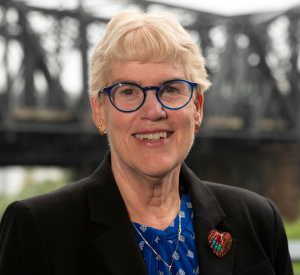“I always loved baseball and played the sport in high school. It only seemed natural that when I was in my third year of Physical Therapy (PT) school in Japan, I did an internship with a professional baseball team,” recalls Fumi Isshiki (MS ’11, Advanced Vestibular PT Certification ’22). “The athletic trainer for the team told me if I wanted to become the best physical therapist, I should study in the U.S.”
“After researching physical therapy programs in the States, I landed on Pitt,” he continues. “It was at Pitt where I learned how to use scientific evidence and apply it to my practice.”
Today, as the CEO of Global Doctor of Physical Therapy in Seal Beach, California, and the head physical therapist, Cypress College Athletics, in Cypress, California, Isshiki specializes in orthopedics and sports. His sub-specialties include concussion, baseball throwing analysis and general men’s and women’s health.
In all of his work, he continues to use what he learned at Pitt SHRS to treat his clients.
“Dr. Sue Whitney was my best resource for the vestibular and concussion physical therapy I now provide,” says Isshiki. “I was shocked to hear her lecture during my days at Pitt. I had never heard about concussion or vestibular rehabilitation when I was in Japan.”
“I quickly learned that there was more to helping athletes than just providing musculoskeletal treatment,” he continues.
“Dr. Isshiki was a dream student,” notes Professor Whitney, co-director, Physical Therapy Post Professional Master of Science (MS) program. “He was always trying to learn more. He asked great questions and was driven to become an even more highly skilled physical therapist during his time in our MS PT program.”
“I am sure my standard of care is at an advanced level due to my studies at Pitt,” says Isshiki. “All my professors followed current evidence. They showed us the latest research and we discussed what would be the best course of treatment based on the articles we read.”
Isshiki credits Michael Timko, instructor and co-director, PT Post-Professional MS program, with mentoring and supporting him while he was in Pittsburgh. “His passion for educating us was unbelievable,” says Isshiki. “He as also so kind. My English was not great at that time but Mike was able to modify the course of study so I could get the most out of the program.”

“I was so impressed by Fumi’s determination and desire to excel,” notes Timko. “I observed him in several clinical simulations and it was clear that he felt most comfortable when treating clients.”
“Fumi possesses very good clinical acumen,” he continues. “He also possesses an ambitious and entrepreneurial spirit. He wanted to create new opportunities for himself and others and was not afraid to explore these avenues and possibilities.”
When an opportunity arose to serve as a physical therapist at the 2021 Summer Olympics in Tokyo, Isshiki jumped on it. He treated athletes from around the world at the Poly Clinic and took on the role of managing and educating other physical therapists. He also helped with English, French and Japanese translations.
Over the past few years, he has set a goal to improve PT education in Japan, little by little. For starters, he translated and published the book he used in class at SHRS into Japanese in the hopes of reinforcing the importance of evidence-based practice in his home country.
“I feel there is a huge gap in physical therapy education in Japan,” says Isshiki. “We, as physical therapists, need to prove the effectiveness of what we are doing.”
In the future, he would like to work with some of his former Pitt SHRS PT professors to create an education system for use in Japan. “I highly respect them, and know that with their help, we could improve physical therapy education and create more practitioners who could bring best practices in physical therapy back to the people who need them.”

